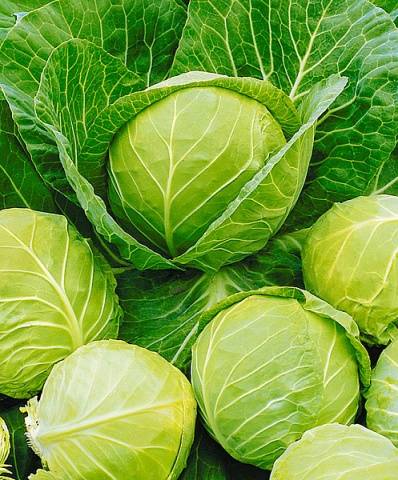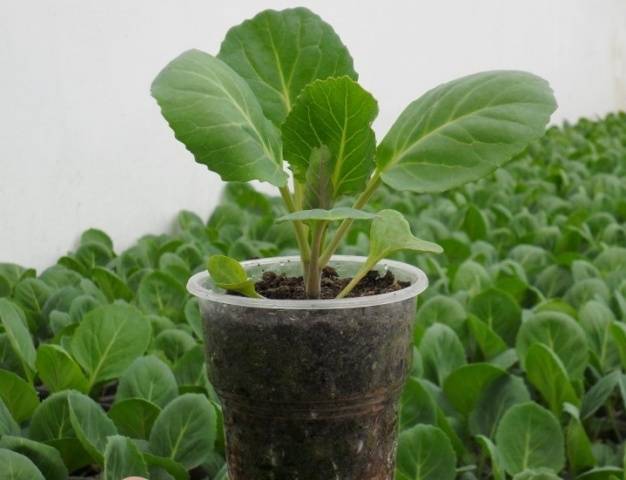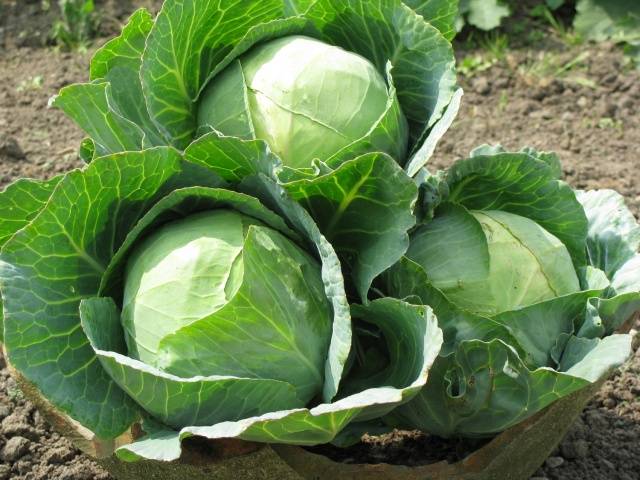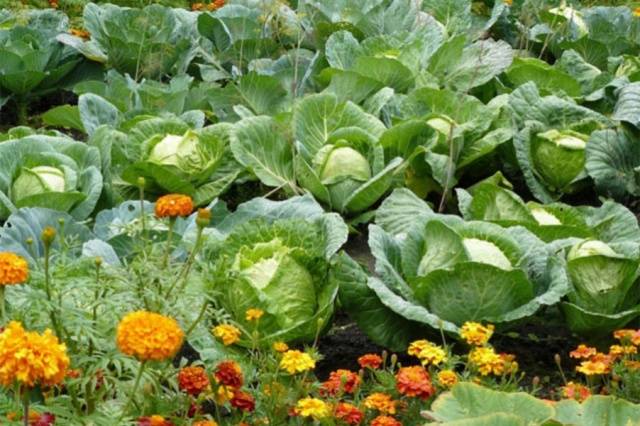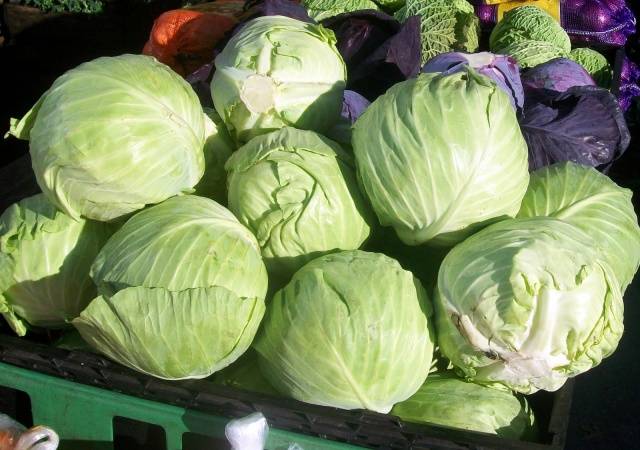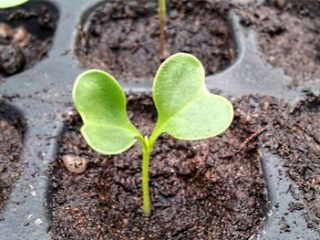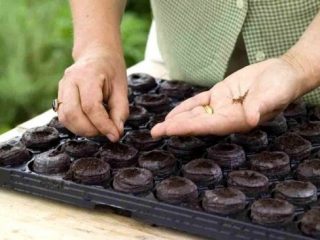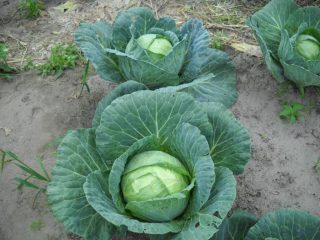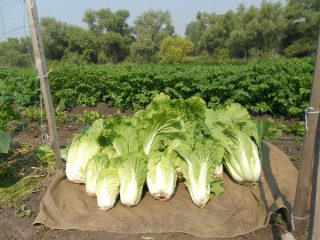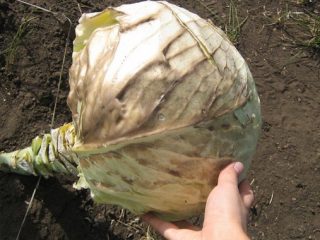Content
Cabbage Gloria F1 is a persistent hybrid bred by Dutch breeders. The variety is characterized by high productivity, the ability to withstand weather changes, and low susceptibility to diseases. Due to its medium ripening, cabbage is used in the daily diet and homemade preparations.
Characteristics of the variety
Description of Gloria cabbage:
- white cabbage mid-season variety;
- the period from planting plants in the ground to harvesting heads of cabbage takes 75-78 days;
- rounded shape of the head of cabbage;
- high density of cabbage;
- blue-green leaves with a waxy coating;
- average weights from 2.5 to 4.5 kg;
- small stalk.
Gloria cabbage is resistant to drought and cold snaps. From 1 sq. m of planting, the yield ranges from 8 to 10 kg. Heads of cabbage are harvested from late August to mid-October.
The taste of the variety in fresh and pickled form is assessed as high. Heads of cabbage tolerate transportation well and can be stored for 4-5 months.
Growing from seeds
Gloria cabbage is grown from seeds. First, seedlings are obtained, which are kept indoors. Grown seedlings are transferred to open ground. Particular attention is paid to choosing a place for planting: taking into account predecessors and fertilizing the soil.
Planting at home
The Gloria variety is a mid-season variety, so seed planting begins in the second half of April. It is better to prepare the soil for plants in the fall by combining turf soil and humus. From fertilizers, add wood ash in the amount of 1 tbsp. l. per 1 kg of substrate.
Cabbage seedlings develop well in peat soil. The main requirement for the substrate is high breathability and fertility. It is allowed to use purchased soil intended for seedlings of vegetable crops.
To improve germination, planting material is kept for 3 hours in a growth stimulator solution. The soil is moistened and poured into boxes or separate containers. To avoid plant picking, you can plant seeds in cassettes with a cell size of 3-5 cm.
The seeds are deepened by 1 cm, after which the plantings are covered with plastic film. Cabbage shoots appear at temperatures above 20 °C.
The first shoots will appear 5-7 days after planting. Until the first leaf appears, the plants are kept at a temperature of 10 °C.
Seedling care
After germination, Gloria F1 cabbage is provided with certain conditions:
- daytime temperature 14-18 °C;
- night temperature 6-10 °C;
- access to fresh air;
- absence of drafts;
- continuous lighting for 12-15 hours;
- regular soil moisture.
If necessary, the plants are illuminated with a phytolamp or fluorescent device. Lighting is placed at a distance of 30 cm from the seedlings. The soil is watered as the soil dries. After adding moisture, the soil must be loosened.
When 1-2 leaves appear, the seedlings are transplanted into larger containers.It is best to use cups filled with peat and humus. The roots of the plants are cut to 1/3 of their length and transplanted into a moistened substrate.
2-3 weeks before moving the cabbage to the garden bed, they begin to keep it in the fresh air more often. The seedlings are transferred to a balcony or loggia and the period of their stay in natural conditions is gradually increased from 2 hours to the whole day.
Landing in the ground
Gloria cabbage seedlings are transferred to an open place from the second half of May to early June. Be sure to wait for the soil and ground to warm up. The plant has 5-7 full leaves, and they reach a height of 20 cm.
The area for cabbage is prepared in the fall. The crop is not planted after radishes, radishes, turnips, rutabaga or any other varieties of cabbage. Acidic soils are not suitable for growing crops.
In the spring, the soil is deeply loosened and weeded weeds. Planting holes are prepared for the seedlings, which are placed in increments of 50 cm. 60 cm are left between the rows.
Gloria cabbage is taken out of the containers and transferred to the planting hole. Peat pots with seedlings are planted directly into the ground. Cabbage is buried in the soil so that the first pair of leaves is located above its surface. The roots of the plants are covered with dry soil, which is compacted slightly.
In hot weather, planted plants are shaded with newspapers or non-woven fabric. If there is still a chance of frost, then cover the plantings with agrofibre at night.
Cabbage care
Gloria cabbage is resistant to drought and cool weather. Caring for the crop involves watering, fertilizing and loosening the soil.To protect against diseases and pests, folk and chemical preparations are used.
Watering
Gloria cabbage is watered in the evening every 5-6 days. In hot weather, moisture is added after 2-3 days. The water is first settled in barrels. Water is poured at the roots of the plants and is not allowed to get on the leaves.
After watering, the soil is loosened so that the plants can better absorb moisture and beneficial components. The garden bed is weeded to remove weeds.
It is recommended to hill up cabbage 3 weeks after planting to form a powerful root system. The procedure is repeated every 10 days.
To maintain soil moisture, mulch with peat. A layer 5 cm thick will reduce the intensity of watering and the growth of weeds.
Feeding
Fertilizer application improves the taste characteristics of Gloria cabbage and accelerates its development. The first feeding is carried out at the seedling stage. A week after picking the plants, a solution consisting of nitrogen, phosphorus and potassium fertilizer is prepared. Take 2 g of each component.
After 2 weeks, the treatment is repeated, and the concentration of the substances is doubled. A couple of days before planting in the ground, the plants are watered with a solution consisting of potassium salt and superphosphate. These substances promote the development of the root system, increase cabbage immunity and resistance to weather conditions.
After transplantation, 2-3 weeks later, the cabbage is watered with a urea solution in the amount of 1 g per 1 liter of water. When forming a head of cabbage, add 10 g of superphosphate and potassium sulfate to a solution of 10 liters of water.
Diseases and pests
According to the description, Gloria cabbage is resistant to Fusarium wilt, a dangerous disease that develops during drought. In young and adult plants leaves turn yellow. When cut, the affected head of cabbage has brown rings. Sick plants must be destroyed.
At low temperatures and high humidity, cabbage heads are susceptible to gray rot and powdery mildew. Diseases are spread by fungal spores.
To prevent diseases, follow the rules for planting and caring for cabbage, disinfect garden tools and planting material. The plantings are sprayed with a solution of the drug Fitosporin. All treatments are stopped during the head setting period.
Gloria cabbage is susceptible to attack by caterpillars, aphids, cutworms, and the May beetle. Plants with a spicy aroma repel pests: mint, sage, cilantro, rosemary, marigolds. They are planted between rows of cabbage.
An infusion of tomato tops or onion peels is effective against insects. The product is infused for 3 hours, then used to spray plants. To make the infusion stick better to the leaves, you need to add crushed soap.
Reviews from gardeners
Conclusion
Gloria cabbage is a popular hybrid variety that is resistant to diseases and various weather conditions. The variety is grown by seedlings. Plants are cared for by adding moisture and fertilizers. The soil in the beds is loosened and weeded to remove weeds. To protect against diseases and pests, special preparations or folk remedies are used.
